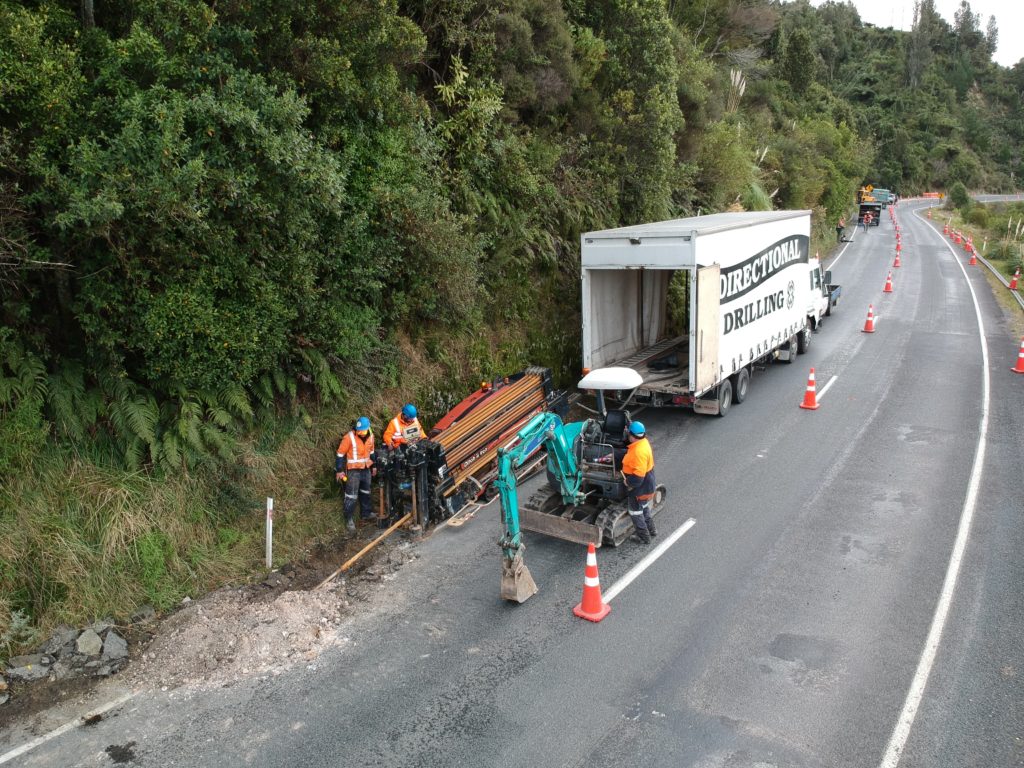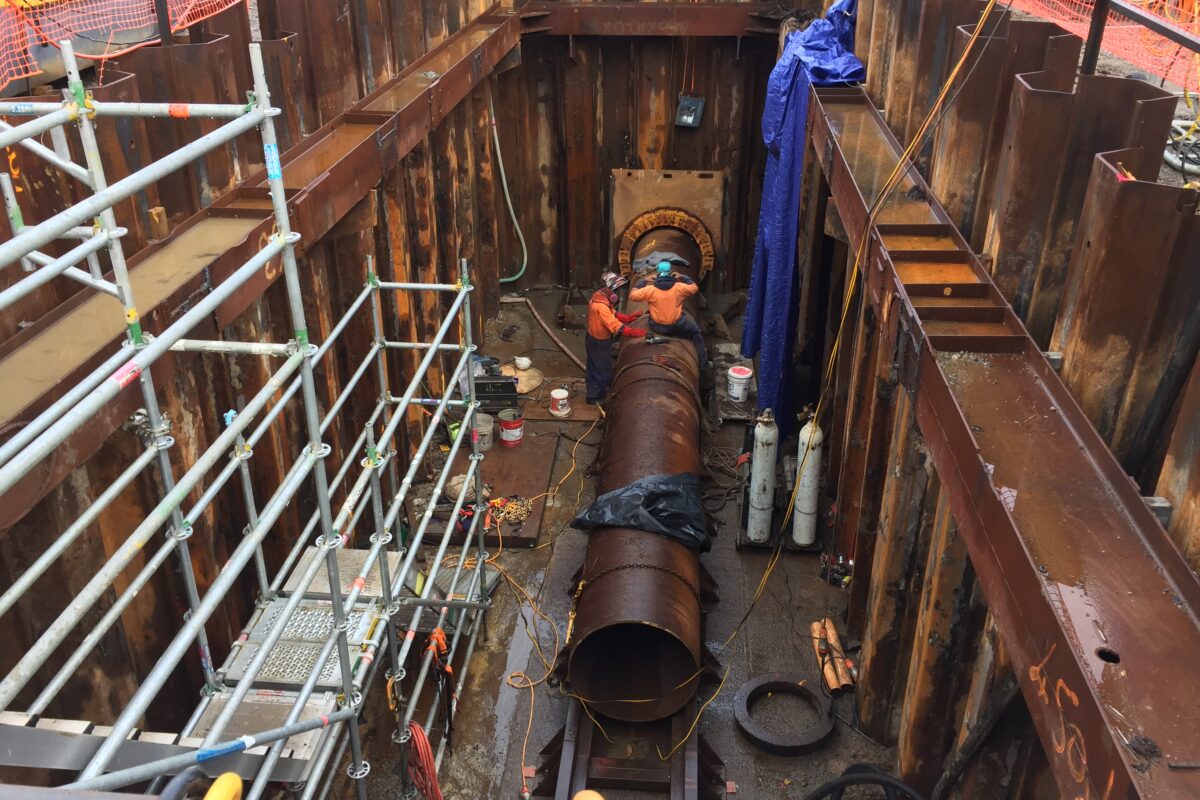Directional drilling in NZ has a rich history dating back to 1989, and in that time has changed the way we’ve carried out civil contracting in New Zealand. Despite the clear benefits, there are a number of key considerations you should be thinking about before you invest in hiring or purchasing a horizontal directional drill (HDD) or other directional drilling machine for your project.
- Site investigation is the foundation
- Utility mapping reduces risk
- Bore path design must match geography
- Traffic and access planning is essential
- Environmental protection builds community trust
What’s the benefits of directional drilling in NZ?
Directional drilling is best used in complex ground conditions, areas with a lot of built up infrastructure, or other scenarios where trench works are unrealistic, dangerous or inconvenient.
Put simply, directional drilling installs underground pipes, conduits and cables without disrupting the surface.
The process allows contractors to cross roads, rivers, rail and other obstacles without open excavation, making it a preferred technique in New Zealand’s busy urban and environmentally sensitive areas.
Site investigation is the foundation
Every directional drilling project begins with a clear understanding of the ground your team are working with. Soil types, rock density and groundwater levels vary dramatically project to project, especially across New Zealand’s geologically varied landscape and cities.
For example, in Auckland, volcanic basalt is extremely common. This igneous hard rock can significantly slow drilling progress and requires specialised tooling. In complete contrast, Tauranga’s sandy soils prove far easier to drill through, but demand careful fluid management to maintain bore stability. Wellington sits on a mix of reclaimed land and weathered greywacke sandstone. These conditions increase the need for accurate bore path design to avoid collapse or deflection.
A comprehensive geotechnical investigation by a qualified geotechnical engineer ensures drillers can match equipment and drilling fluids to the ground, providing that much-needed certainty of the conditions you’re working in.
Utility mapping reduces risk
Urban centres in New Zealand are heavily serviced by existing utilities, ranging from recent work to 100-year-old, ageing infrastructure. Fibre, water, gas and power often share narrow corridors along roadways, city corridors and more.
Accurate mapping of these assets is critical and requires collaboration with a range of stakeholders, including:
- Local and regional councils
- Utility providers
- Landowners and business owners
In Auckland’s CBD for example, services are layered in tight spaces. Advanced locating technology such as ground penetrating radar helps identify exact positions before work begins. Utility strikes cause costly delays and safety hazards. Effective mapping allows crews to design a bore path that threads safely through crowded zones.
Bore path design must match geography
The design of the bore path is shaped by the local environment including hills, subterranean waterways, road corridors, greenways and more. This means your active bore path often needs to curve under hillsides or around retaining structures. These conditions highlight the importance of accurate planning software, good stakeholder management and experienced designers. A well-considered bore path reduces the chance of unplanned deviations and ensures the drill exits exactly where required.
Choosing a team that know what they’re doing is essential, and a workman is only as good as his tools. Drilling fluid is critical for cooling the drill head, transporting cuttings and stabilising the bore. Proper fluid management planning prevents bore collapse and ensures smooth drilling progress, and different ground types demand different fluid strategies.
Traffic and access planning is essential
Directional drilling in NZ is often required in congested or high traffic environments. Arterial roads and motorways present major access challenges, create health and safety risks, and require better coordination than on private land. Choosing a directional drilling team should consider their track record of coordinating successfully with transport agencies, councils, traffic management companies and more. Considering traffic and access early allows crews to minimise disruption while maintaining productivity.
Environmental protection when directional drilling in NZ builds community trust
New Zealand’s drilling projects are often highly visible to local communities, and as a country that prides itself on our natural landscape, doing everything you can to protect natural areas, our fauna and our flora is key!

Protecting the surrounding environment is an important logistical factor, not just for public perception, but also to reach compliance on projects. Building these environmental safeguards into the logistics shows commitment to responsible construction and builds trust with the public, as well as reaffirming your corporate social responsibility.
What else?
There are a raft of other things to consider before you start directional drilling in NZ.
If you’ve got more questions or need to know more about the directional drilling process, get in touch with the Universal Underground Ltd team today.

